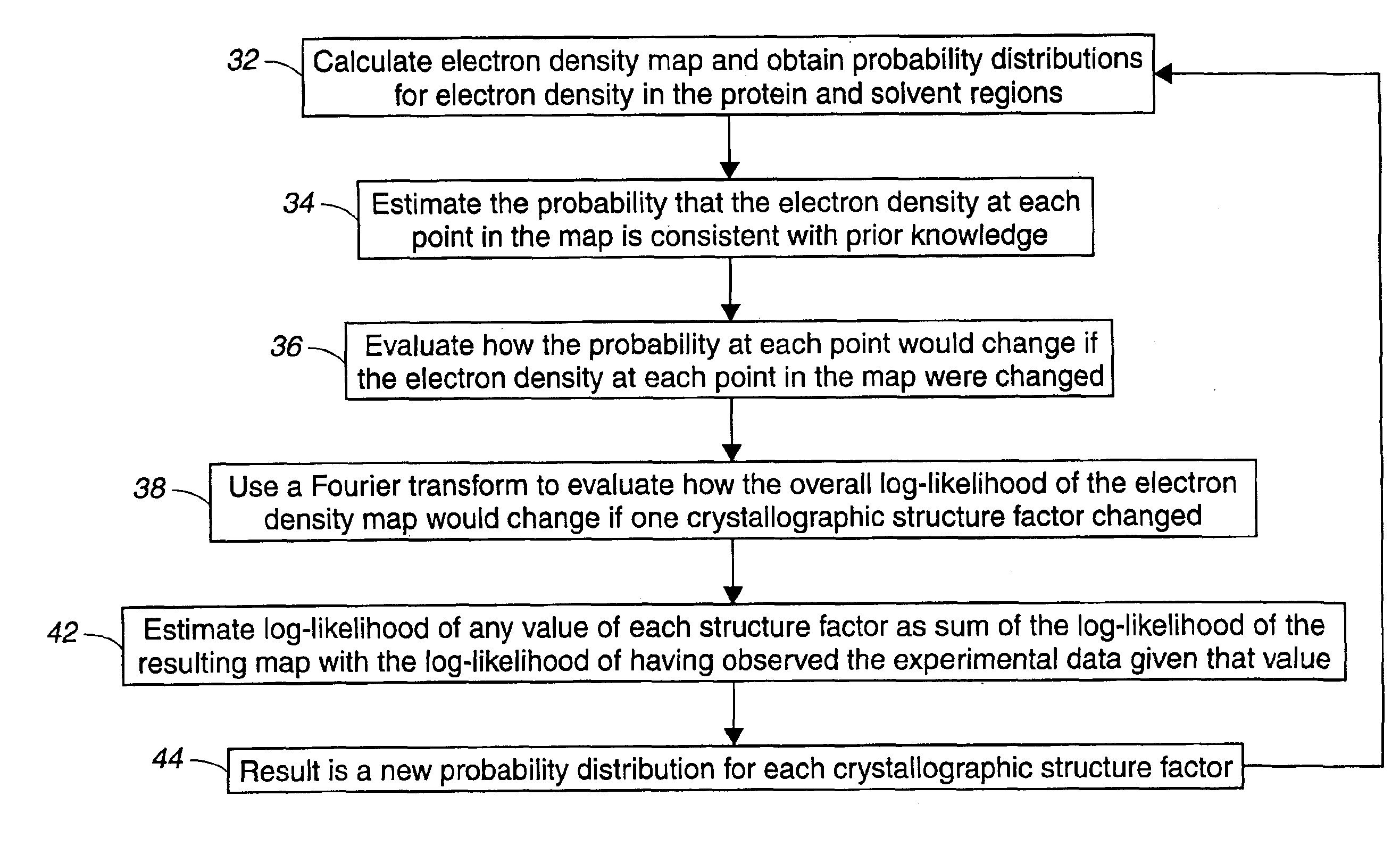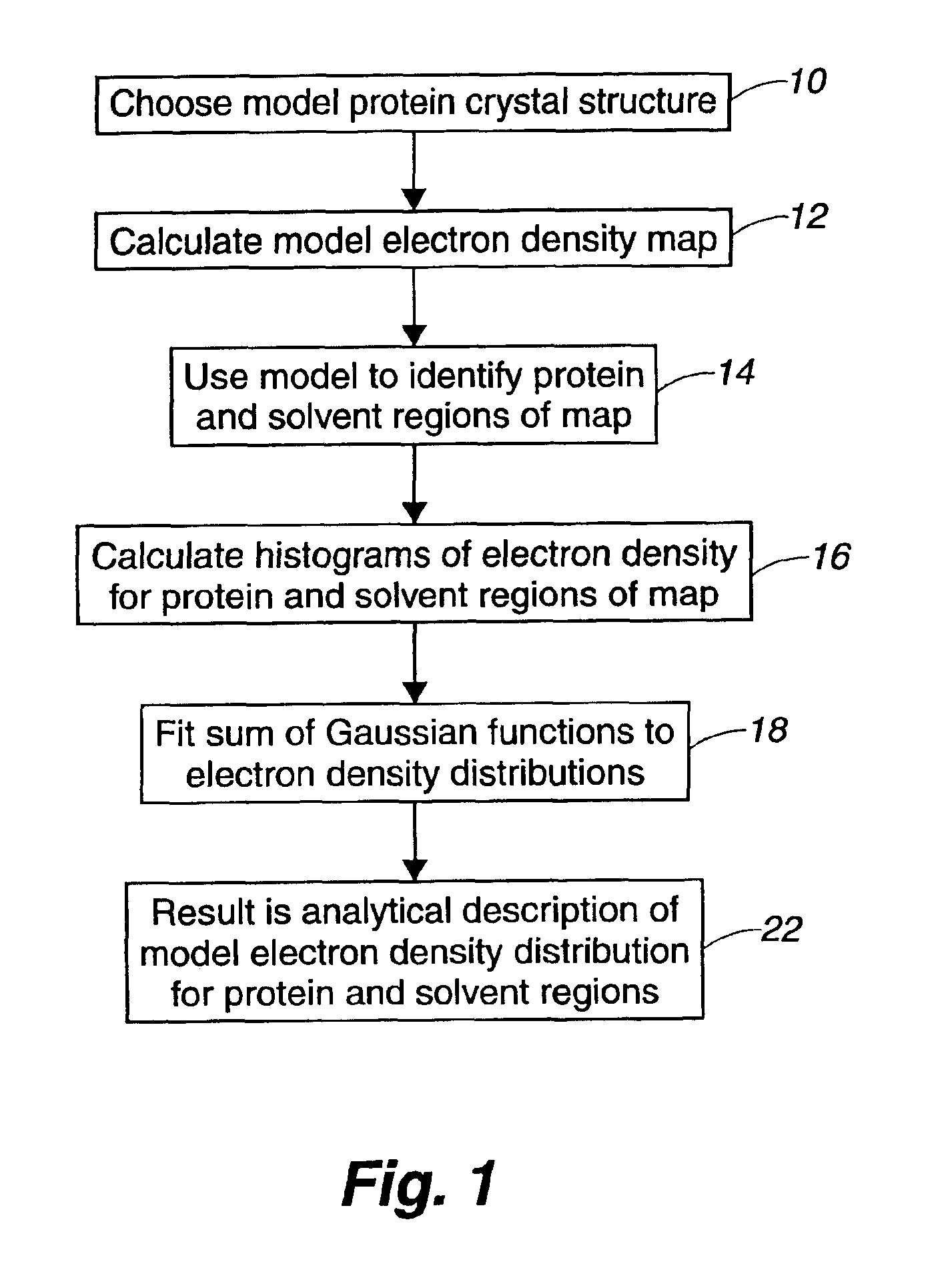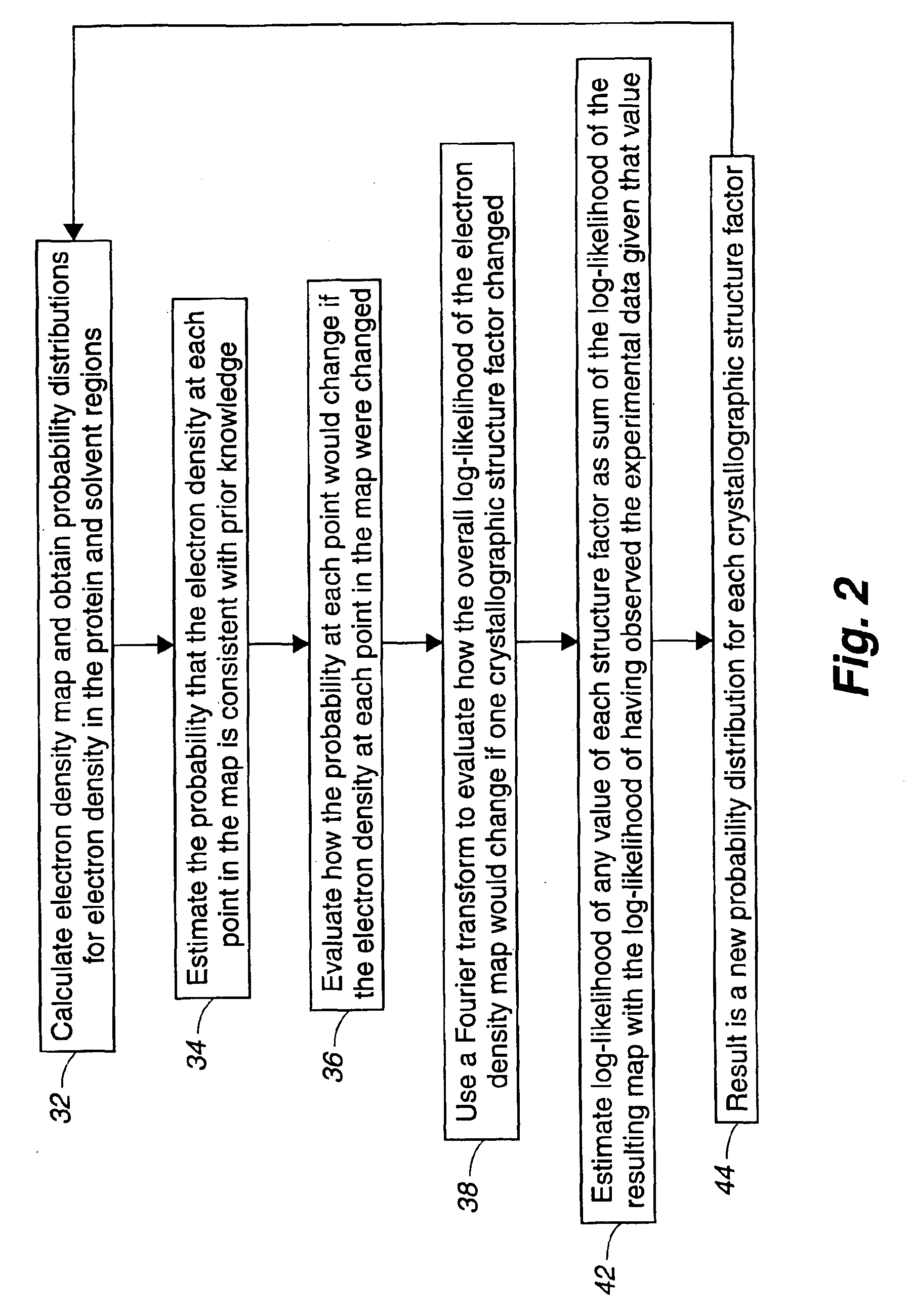Likelihood-based modification of experimental crystal structure electron density maps
a technology of experimental crystal structure and electron density map, which is applied in the field of crystal structure determination from the analysis of diffraction pattern, can solve the problems of not being clear on how to weight the observed phases, and achieve the effect of improving the electron density map of the experimental crystal structur
- Summary
- Abstract
- Description
- Claims
- Application Information
AI Technical Summary
Benefits of technology
Problems solved by technology
Method used
Image
Examples
Embodiment Construction
[0020]In accordance with the present invention, experimental phase information is combined with prior knowledge about expected electron density distribution in maps by maximizing a combined likelihood function. The fundamental idea is to express knowledge about the probability of a set of structure factors {Fh} (Fh includes amplitude, Fh, and phase, φ factors) and in terms of two quantities: (1) the likelihood of having measured the observed set of structure factors {FhOBS} if this structure factor set {Fh} were correct; and (2) the likelihood that the map resulting from this structure factor set {Fh} is consistent with prior knowledge about the structure under observation and other macromolecular structures. The index factor h is defined in terms of the hkl plane and unit vectors a*, b*, c* in reciprocal lattice space as h=ha*+kb*+lc.
[0021]When formulated in this manner, the overlap of information that occurred in the real-space modification methods is not present because the exper...
PUM
| Property | Measurement | Unit |
|---|---|---|
| atomic displacement parameters | aaaaa | aaaaa |
| distance | aaaaa | aaaaa |
| electron density map | aaaaa | aaaaa |
Abstract
Description
Claims
Application Information
 Login to View More
Login to View More - R&D
- Intellectual Property
- Life Sciences
- Materials
- Tech Scout
- Unparalleled Data Quality
- Higher Quality Content
- 60% Fewer Hallucinations
Browse by: Latest US Patents, China's latest patents, Technical Efficacy Thesaurus, Application Domain, Technology Topic, Popular Technical Reports.
© 2025 PatSnap. All rights reserved.Legal|Privacy policy|Modern Slavery Act Transparency Statement|Sitemap|About US| Contact US: help@patsnap.com



